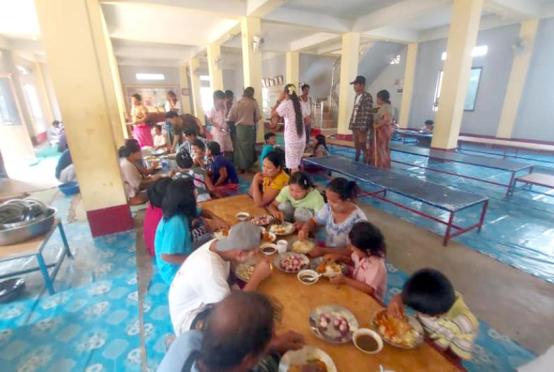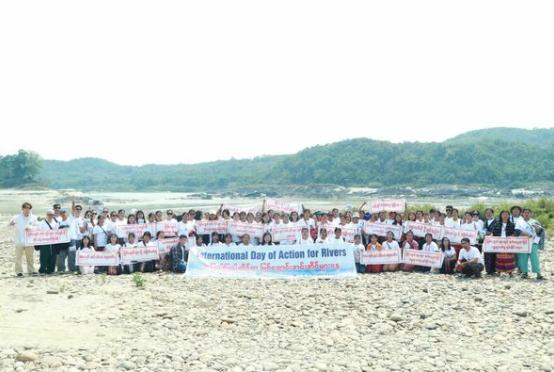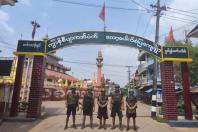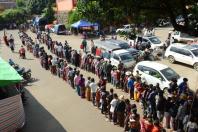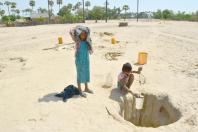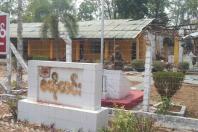
KATHMANDU (The Kathmandu Post/ANN) - Activists fighting on behalf of the indigenous population themselves are not hopeful about sustaining their efforts.
Members of the indigenous communities in Nepal on Friday gathered at Maitighar Mandala to mark the International Day of the World’s Indigenous Peoples. Unlike in the past, when they organised events at Tundikhel in Kathmandu, the indigenous communities this year decided to be on the streets to mark the day, once again, to shine a spotlight on how despite various political changes, the Nepali state has continued to remain exclusionary.
Nepal’s indigenous movement of late, especially after the promulgation of the constitution, has taken a back seat. But the recent Public Service Commission vacancy notice—a drive to hire more than 9,000 staff for the local bodies—has brought them together to demand that the state uphold the principle of inclusion.
But those who have led the country’s indigenous movements and those who have watched and studied these struggles say they doubt the efforts will sustain.
“The fresh protest [against the Public Service Commission vacancy notice] is a reactionary move,” said Shankar Limbu, an activist who defends human rights of indigenous people. “If the indigenous peoples’ rights were to be secured, we need to launch sustained and pro-active movements.”
Nepal’s indigenous people constitute 35.8 percent of the total population. But historically, their representation in the state organs has been dismal.
If the last nine years’ timeline is anything to go by, Nepal has undergone a sea change—politically as well as socially. A decade-long civil war that ended in 2006, the second people’s movement the same year, Madhes Andolan the following year, the abolition of the monarchy and the establishment of the federal republic in 2008 and a new constitution in 2015—all these should have added up to create a society where members of all the communities enjoyed equal rights.
In the run-up to the constitution promulgation, the indigenous communities and Madhesis had joined hands to protest, saying some of the provisions in the charter discriminated against some sections of the society. But the constitution was fast-tracked. In the 2017 elections, the indigenous people won 29 percent of seats, around 7 percent below their share of the population.
Since then it has been a slippery slope, as leaders of big political parties managed to co-opt leaders of the minority groups, say experts and researchers on Nepal’s indigenous people.
“Leaders of the indigenous movement missed the opportunity. They should have pushed to get their demands addressed when the constitution was in the making,” said Dambar Chemjong, the head of the anthropology department at Tribhuvan University. “It’s difficult to get a similar historic political situation again.”
One of the organisations that had been at the forefront of movements for securing indigenous peoples’ rights in the past was the Nepal Federation of Indigenous Nationalities, or NEFIN as it is usually known.
According to indigenous leaders, parties have largely been able to co-opt this organisation also which once served as the umbrella organisation of the indigenous peoples in Nepal. NEFIN today looks more like a sister wing of a political party and it neither has the wherewithal to create a strong movement nor conceptual clarity when it comes to the rights of indigenous people.
“What is the difference between the federation led by Jagat Baram and Om Gurung?” said Limbu.
Baram leads NEFIN while Gurung, the former general secretary of NEFIN, leads the All Nepal Federation of Indigenous Nationalities, a sister wing of the CPN-Revolutionary Maoists under Mohan Baidya, which is today consigned to oblivion with no presence at all in Nepal’s political spectrum.
Limbu, however, dismisses that the indigenous movement has died down.
Struggles have continued here and there but they are fragmented, said Limbu, who is also a lawyer associated with the Lawyers' Association for Human Rights of Nepalese Indigenous Peoples, an NGO that supports indigenous peoples in their legal fight for their rights.
Limbu agrees that there is a need for a nationwide movement if the indigenous people of Nepal were to push the government to address their concerns and demands.
“But there is a catch,” said Limbu. “Some are demanding an amendment to the constitution; others want the charter to be rewritten. There is a problem in concept among the indigenous people. They are yet to figure out what exactly they want.”
It’s not that all the past movements have gone down the drain. Over the past decade, the indigenous movement has made a significant achievement in establishing itself as a major force for democracy in the country. The movement managed to bring the rights of indigenous peoples, inclusion, cultural and linguistic rights and the concepts like nation-state and representation to the mainstream.
Since the Maoist insurgency helped establish the issue of indigenous rights, people from the indigenous communities had pinned high hopes on Maoist leaders after they came to power.
But the Maoist party itself has suffered several splits and the leaders have been part of the same ruling class against which it fought the war for a decade.
Gradually, the indigenous movements lost steam—it lost strong organisations and leaders committed to championing the cause of the indigenous people.
“Leaders from the indigenous communities focused more on personal benefits rather than working for the larger cause,” said Malla K Sundar, a rights activist. “NEFIN should have given continuity to its struggle for the 11-province model of identity-based federalism with self-determination and proportional representation. But it failed.”
Many believe major political parties, after the promulgation of the constitution, have strategically made moves to subvert the indigenous people’s call for their cultural, political and linguistic rights.
Mukta Singh Lama, an indigenous rights activist who holds a PhD in anthropology, said everything started with political parties co-opting the major leaders fighting for the indigenous rights, especially those who were at the helm of NEFIN. Then, they alleged that indigenous leaders who were raising the agendas of the indigenous groups were trying to push the country towards communal violence, according to Lama.
One example is a statement by the European Union last year, in which it said Nepal’s inclusion policy was flawed. While the Ministry of Foreign Affairs was quick to issue a rebuttal, calling the statement a direct challenge to Nepal’s constitutional provisions, influential politicians described it as an interference in Nepal’s internal affairs.
“Political parties have largely been able to establish that the indigenous communities’ agendas are injected by foreign forces to divide the country,” said Lama.
Though Chemjong, the anthropologist, is not very optimistic, as he believes indigenous leaders have already squandered the opportunity due to infighting, Lama says not all is lost yet.
“It’s time to introspect and self-criticiSe,” said Lama. “If the current breed of indigenous leaders has failed, members from the new generation, who are accountable to their communities and not the political parties, should take the lead.”



